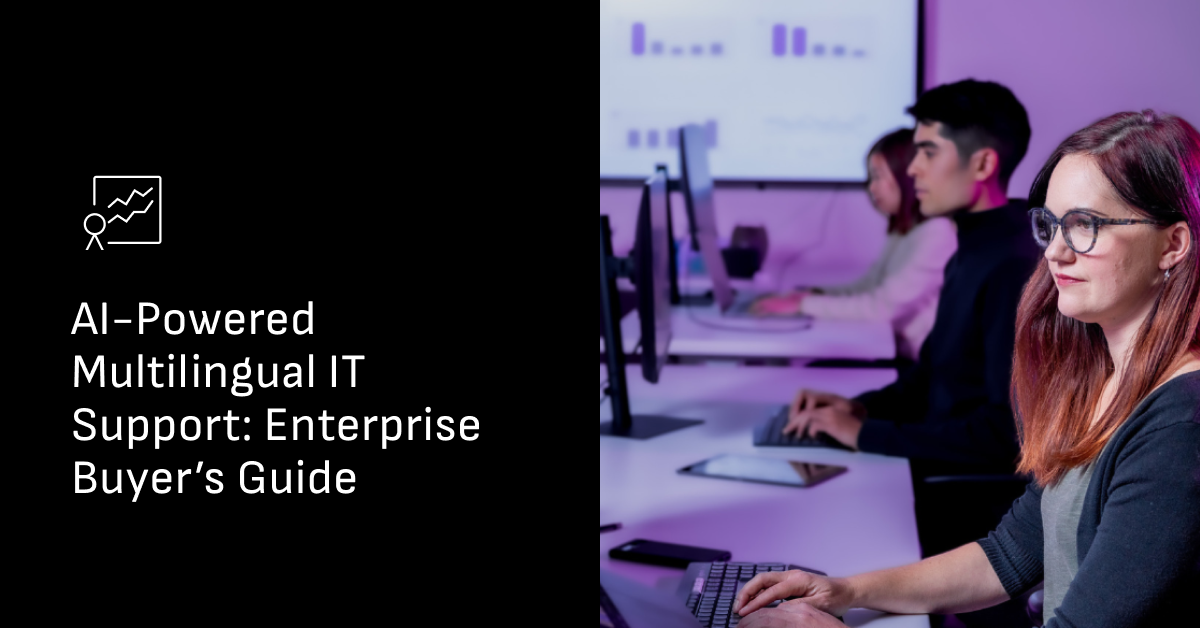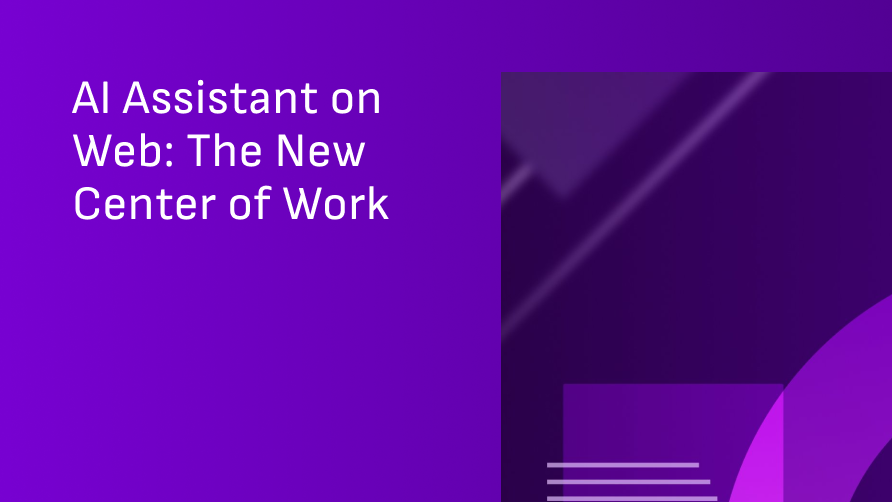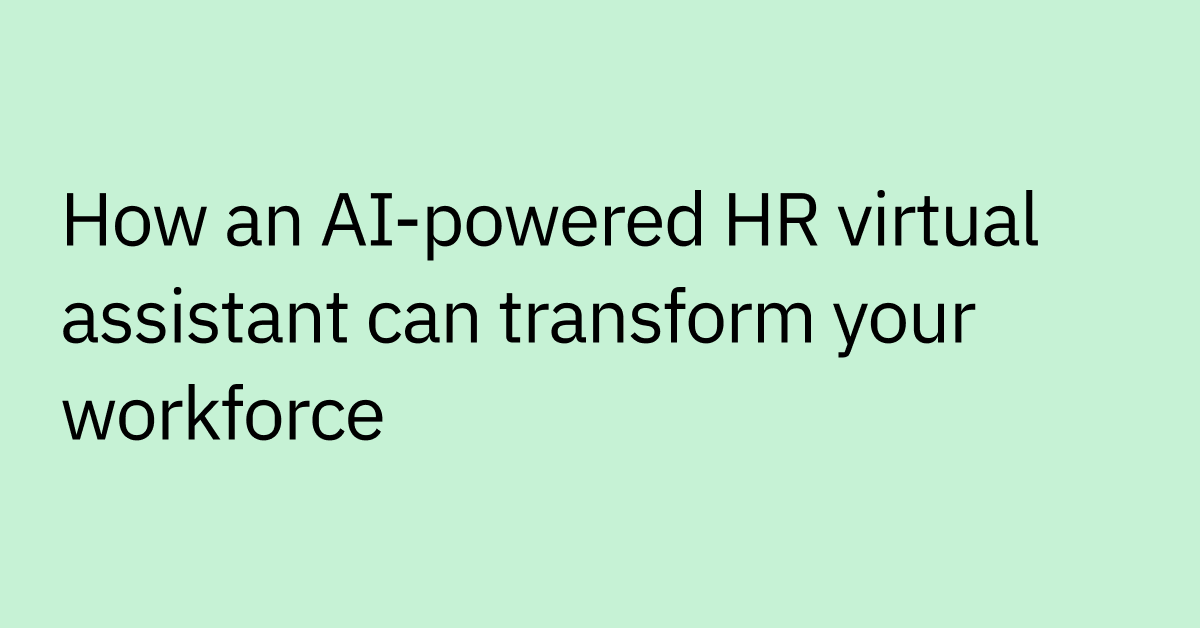Language barriers aren’t just an inconvenience — they can also be a costly business problem. According to Slator’s 2023 Language Industry Market Report, 49% of global executives reported annual financial losses of $8–11 million due to language barriers.
Whether it’s an employee struggling to navigate untranslated helpdesk articles or misreading important policy updates, every language gap introduces friction into the employee experience.
And when employees can't get help in the language they’re most comfortable with, they may end up wasting time translating, misinterpreting critical information, or simply giving up — all of which hurt productivity and engagement.
To solve this, enterprises need a unified support system that can bridge language divides without compromising consistency, accuracy, or speed — and that's where multilingual IT support solutions can help.
What is multilingual IT support?
Multilingual IT support is the ability to provide technical assistance to employees in their preferred languages — automatically and at scale. It ensures helpdesk chats, knowledge base articles, and ticketing systems are easy to access and effective, no matter where employees are or what language they speak.
Imagine this scenario: An employee in Tokyo needs to reset her email password at the start of her workday. Instead of struggling with English-only help articles or waiting for the U.S.-based support team to come online, she messages the company's IT support platform in Japanese.
The system instantly responds in fluent Japanese, guiding her through the password reset process. Within minutes, she's back to work — without delays or confusion.
This kind of real-time employee experience can be both convenient and transformative for global operations, offering benefits like:
- Faster issue resolution across all regions and time zones
- Consistent support quality regardless of language
- Improved employee satisfaction and productivity
- Reduced burden on multilingual support staff
- Enhanced scalability for global enterprises
How AI empowers multi-language support at scale
Of course, delivering support in multiple languages — in real time — requires more than manual translation tools or scripted chatbot flows. Traditional tools often rely on separate knowledge bases for each language, which creates content silos and makes it hard to maintain consistency across regions.
Multilingual AI support takes a more sophisticated approach by combining several advanced technologies:
Text analysis and understanding
- Natural Language Processing: Systems use NLP to analyze and understand text across different languages, identifying intent, tone, and context regardless of phrasing.
- Machine Learning: ML models train on extensive datasets to recognize language patterns, improving translation accuracy and the relevance of responses over time.
Response generation
- Large Language Models: LLM models enable AI systems to generate natural-sounding, contextually-rich responses that mimic native speakers, going beyond simple translations.
Multilingual interaction facilitation
- Chatbots: Designed to support multilingual interactions by integrating translation capabilities and language-specific NLP modules.
Voice interaction
- Speech recognition and Text-to-Speech (TTS): These technologies allow for seamless voice interactions in different languages, enhancing accessibility and user experiences.
Together, these technologies help create support experiences that feel natural and personalized. Rather than simply translating word for word, the best systems have the ability to understand cultural context, technical jargon, and enterprise-specific terminology.
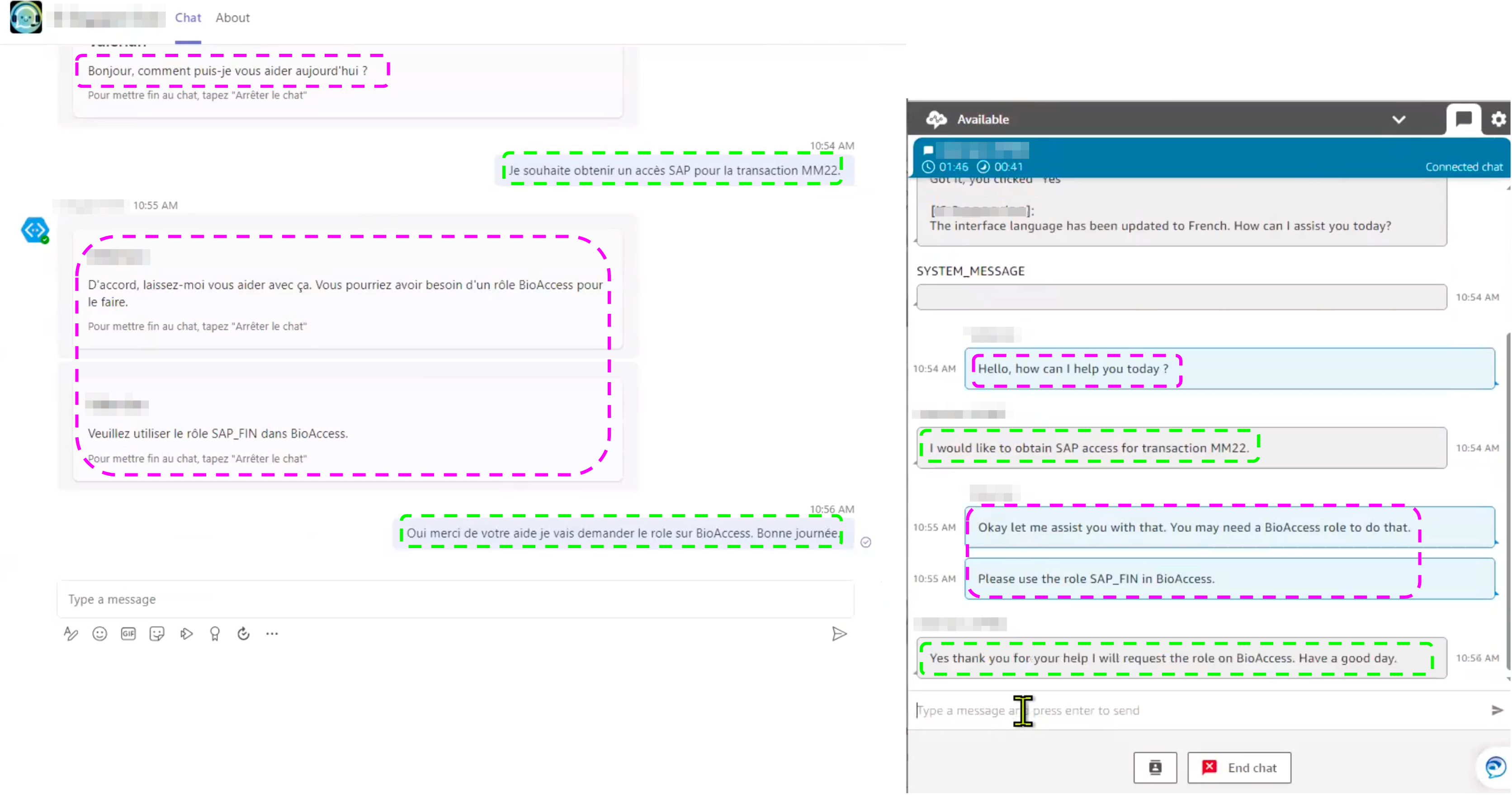
Enterprise use cases for multilingual AI support
When powered by AI, multilingual support extends far beyond simple translation. It helps companies to deliver consistent, high-quality experiences for employees across departments — regardless of region, time zone, or language.
Here’s how organizations are putting it into action:
Instant IT support across languages and time zones
IT support teams are already handling high ticket volumes, with some managing hundreds or even thousands of tickets each month.
Support tickets in multiple languages add to the challenge, particularly for repetitive issues like password resets, software access requests, and connectivity problems.
Multilingual AI support, often delivered through an AI assistant — a conversational interface that automates support across systems — can help by:
- Automatically detecting the language of each request
- Understanding the employee’s intent
- Guiding them through resolution in real time in their preferred language — without relying on human translators or regional handoffs
For example, if an employee in Brazil submits a ticket about VPN access issues in Portuguese, an AI assistant could troubleshoot in that language immediately.
If the issue ends up requiring escalation, the system can translate the important details for the U.S.-based IT team, while maintaining communication with the employee in Portuguese.
This kind of personalized, seamless support can lead to lower mean time to resolution (MTTR), reduced ticket backlogs, and dramatically improved employee satisfaction, both in IT and operations.
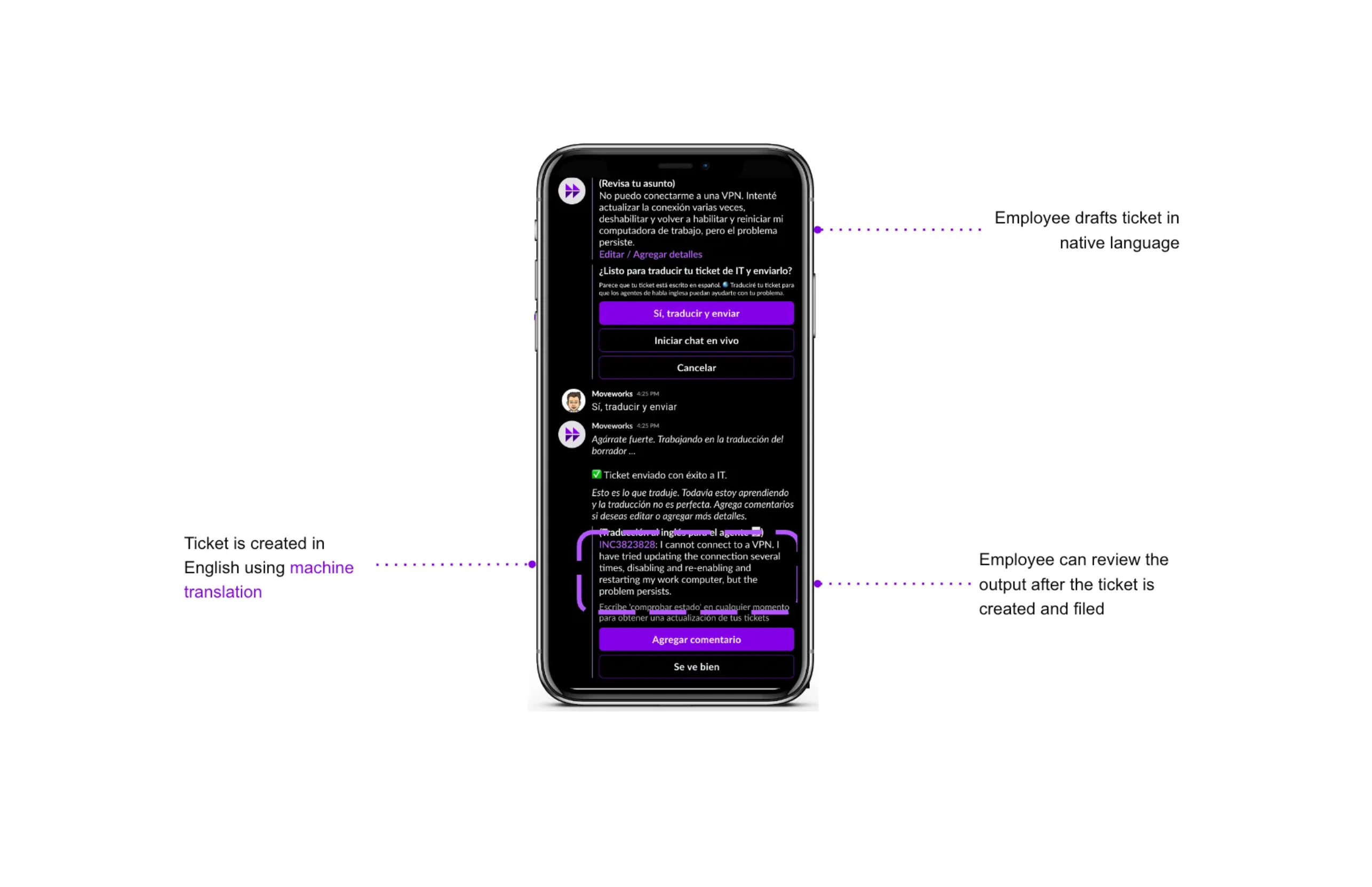
HR support
HR plays a big role in helping employees succeed long-term, handling everything from benefits enrollment to questions about company policies. But language barriers in HR can cause serious issues, ultimately leading to confusion about important things like healthcare, pay, and workplace rules.
With multilingual AI support — delivered through an intelligent assistant that understands and responds in natural language — HR teams can provide consistent information in the languages employees actually speak.
For instance, when an employee in France has questions about parental leave policies, they can get accurate information in French immediately, rather than attempting to translate complex policy documents in English that may get misinterpreted.
AI assistants are able to answer HR questions, guide employees through processes like benefits enrollment, share necessary forms, and clarify workplace policies — all in the employee's native language, around the clock.
Multilingual enterprise search
Knowledge base articles, policy documents, and internal resources are often written in one language (usually English), making them less accessible for non-native speakers.
This forces employees to either deal (and struggle) with manual translations or submit support tickets for information that should be more readily available.
Multilingual AI support can transform enterprise search by making knowledge resources available in the languages your employees actually understand. For example, an employee in China searching for “expense report policy” can get a contextually relevant response in Chinese, even if the original content was written in English.
The system can provide contextually relevant translations in real time, eliminating the need for employees to navigate English-only portals or submit tickets for simple information requests. This capability extends self-service help desk functionality to the entire global workforce.
Top tools for multilingual IT support in 2025
Whether you're looking to enhance your IT help desk, HR support, or customer service workflows, choosing the right multilingual platform matters. Here are some of the top tools enterprises are using to deliver language-inclusive support at scale in 2025:
Tool | Primary Use Case | Price Range | Category |
Moveworks | Enterprise-wide employee support in 100+ languages | Custom quotes | AI Assistant/Employee Support |
Salesforce AI | Multilingual CRM workflows | Custom quotes | CRM and Sales |
Microsoft Copilot | Language support across Microsoft 365 | $30/user/month | Productivity Suite |
IBMx Watson | Trainable virtual agents for global enterprises | Custom quotes | Regulated Enterprise AI |
Zendesk | Multilingual customer service | Starts at $55/user/month | Customer Service |
Intercom | Global customer conversations | Starts at $29/user/month | Conversational Support |
Freshdesk | Omnichannel multilingual support | Starts at $15/agent/month | Helpdesk Software |
1. Moveworks — Deliver instant support in 100+ languages
Moveworks’ agentic AI Assistant is purpose-built for enterprise support, automatically understanding and responding to employees in their preferred language.
It uses advanced natural language understanding (NLU) to chat with employees in their preferred language automatically, without them having to manually select it.
Users can chat with the AI assistant in the platforms they already use, like Slack and Microsoft Teams, and get on-demand support 24/7 across IT, HR, and more.
Key features include:
- Support for over 100 languages with 98% language detection accuracy
- Real-time (on the fly) translation of knowledge base content and support conversations
- Deep integrations with enterprise systems for end-to-end workflow automation
- Contextual understanding that preserves intent across languages
Moveworks is ideal for large, global enterprises that want to provide consistent, high-quality support at scale — while helping to reducing ticket volume and the burden on support staff with multi-lingual support.
2. Salesforce AI — Multilingual AI built into your CRM workflows
The Salesforce AI integrates multilingual customer support capabilities directly into Salesforce platforms, making it an easy value-add for organizations that already use the solution for customer relationship management (CRM) and support operations.
Key features include:
- Native integration with Salesforce Service Cloud
- Support for customer-facing and employee communications
- Translation of knowledge articles, FAQs, and support responses
- Einstein Language capabilities for intent detection across languages
This solution works best for organizations with a global audience that are already using Salesforce and want to extend language support without implementing separate systems.
3. Microsoft Copilot — Language-aware AI across Microsoft 365 tools
Microsoft Copilot adds multilingual features to the full Microsoft 365 suite. Copilot can translate documents, messages, emails, and even live voice across multiple languages while preserving formatting and context.
Key features include:
- Native integration with Teams, Outlook, Word, and other Microsoft tools
- Real-time translation during virtual meetings
- Document translation while maintaining formatting
- Multi-language support for both input and output
Microsoft Copilot is most valuable for teams already heavily invested in the Microsoft ecosystem that need language support integrated into their daily workflows.
4. IBM watsonx — Trainable virtual agents for global enterprises
IBM's watsonx platform offers sophisticated virtual agent capabilities with strong multilingual support. The system is especially focused on industry-specific use cases and compliance requirements.
Key features include:
- Strong compliance and security features
- Support for multiple languages and regional variations
- Advanced analytics and learning capabilities
IBM watsonx is a good option for enterprises in highly-regulated industries that need both multilingual support and strong compliance features.
5. Zendesk — Scale multilingual customer service with AI-driven ticketing
Zendesk combines ticketing system functionality with AI-powered language support, making it useful for organizations that need to support both employees and customers across multiple languages.
Key features include:
- Multilingual knowledge base functionality
- Translation of tickets and responses
- Support for multiple communication channels
- Customer satisfaction measurement across languages
This solution works well for organizations that are focused primarily on customer support and want to extend similar capabilities to internal employee needs.
6. Intercom — Connect with global customers in their language
Intercom specializes in conversational support interactions with strong multilingual capabilities. While primarily focused on customer service experiences, it can also support employee communications.
Key features include:
- Real-time translation of conversations
- Customizable responses in multiple languages
- Support for messaging-based interactions
Intercom is most valuable for organizations that need to provide messaging-based support across various languages.
7. Freshdesk — Omnichannel support with multilingual auto-routing
Freshdesk offers ticketing system functionality with built-in language detection and routing capabilities. This means that the platform can automatically assign tickets to agents based not only on urgency and expertise but also on the original language the ticket was submitted in.
Key features include:
- Automatic language detection and routing
- Translation of knowledge base content
- Support for email, chat, and phone interactions
This solution works well for organizations with language-specialized support teams who need efficient routing and management of multilingual requests.
Implement a multilingual IT support platform that meets your needs
Choosing the right multilingual AI support platform requires more than checking a language list. To deliver consistent, scalable support across your organization, keep the following factors in mind:
- Language coverage and accuracy should be your top priority.
Look for platforms that support multiple languages with high-quality natural language understanding and generation. The best systems preserve intent and meaning intact instead of just providing word-for-word translation across every interaction.
- Self-service features let employees resolve common problems, without needing to wait for a human agent.
A good platform should understand requests, offer solutions, and take action, all in the employee’s preferred language. This is important for building a self-service help desk that works for everyone across the enterprise.
- Integrate a solution that will work with your existing systems.
The tool should connect easily with existing systems like your ITSM, HRIS, knowledge bases, and communication tools. These integrations help provide end-to-end support experiences.
- Security and compliance features should keep sensitive information safe across all supported languages.
Multilingual support shouldn't come at the expense of data privacy. Choose a platform with built-in controls and audit logs, and compliance frameworks that align with your governance requirements across all regions. Ensure that these features are effectively implemented to maintain the same level of security and compliance for the languages supported.
- Analytics and insights make it easier to spot support patterns across different regions and languages.
Look for platforms that surface trends by language and region, such as common issues, resolution rates, and employee satisfaction employee satisfaction — so you can continuously improve support experiences worldwide.
Bring multilingual support into the AI era
Language barriers shouldn't limit employee support or create inconsistent experiences across your organization. Global enterprises need AI-powered solutions that make all services and information accessible to employees, regardless of language preference.
- Moveworks provides multilingual support by leveraging advanced natural language understanding to detect, comprehend, and is able to respond in over 100 languages — automatically.
- Employees get the help they need in their preferred language, without having to manually select it from a menu, offering an experience that feels natural and personalized.
This AI-driven approach not only boosts employee productivity and satisfaction but also helps to reduce the burden on support teams. With global self-service automation, employees can quickly resolve common issues on their own — from anywhere in the world.
Learn more about Moveworks offers multi-lingual support or request a Moveworks demo to see how a multilingual AI assistant can transform your support experience.
Table of contents
